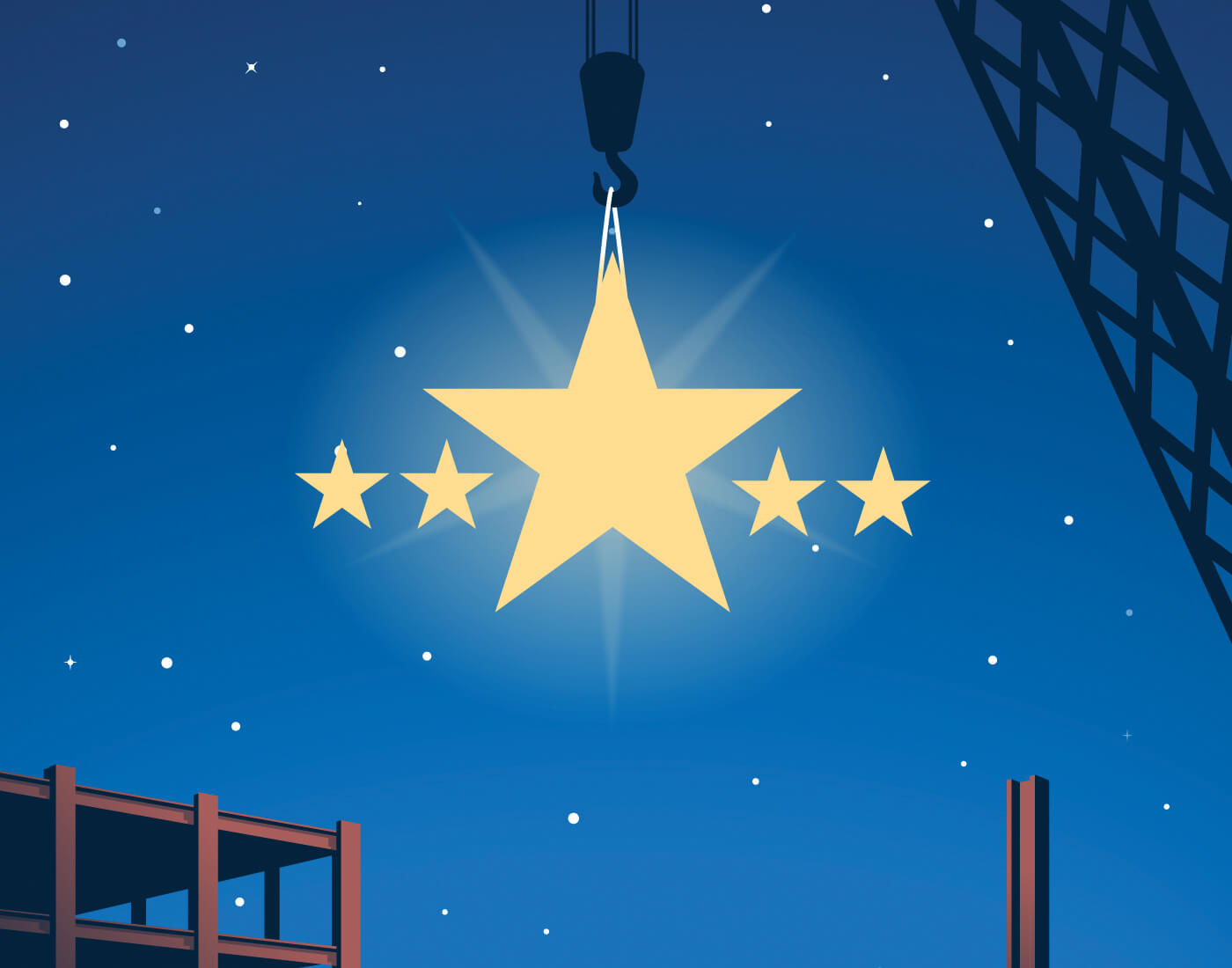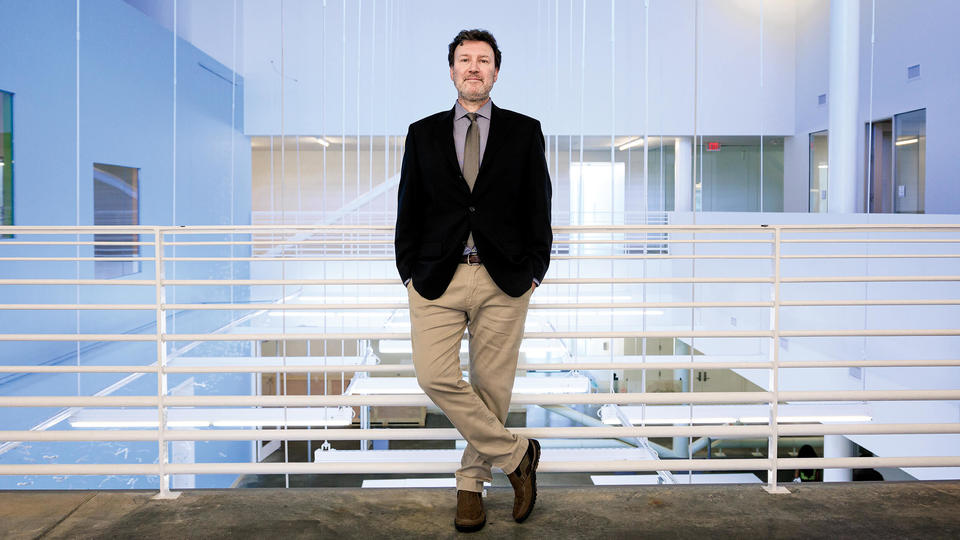
Falling Stars

Company reputations are more precious and precarious than ever. How can organizations insulate themselves from a world of constant controversy?
Warren Buffett famously prioritizes reputation over profit. In a 2014 memo to his Berkshire Hathaway management team, he wrote: “We can’t be perfect but we can try to be. As I’ve said in these memos for more than 25 years: ‘We can afford to lose money — even a lot of money. But we can’t afford to lose reputation — even a shred of reputation.’”
Buffett’s words still hold true. If anything, reputation has become a more dynamic and delicate asset over time. In today’s heated and fast-paced environment of 24-hour news cycles and social media algorithms, perceptions of any given company seem to be in constant jeopardy. This is especially true for industry leaders like BP, Starbucks and United Airlines. The bigger a brand becomes, the more exposed it is to public scrutiny.
To quote Buffett once again: “It takes 20 years to build a reputation and five minutes to ruin it. If you think about that, you’ll do things differently.” Given today’s increasingly spiky landscape of consumer feedback, it can take closer to five seconds for organizations to lose ground. So, how should they be doing things? How has the art of reputation management evolved? How can companies achieve the effect that Rice Business professors Vikas Mittal and Utpal Dholakia call “brand insulation?” And what can we learn from prominent cases of reputational recovery?
The Toyota Crisis

Rankings, ratings and crisis responses: They’ve become essential to the way outsiders perceive an organization’s identity and character. These days, brand favorability can rise and fall with a single tweet. But 140 characters is not much room for nuance. As recent controversies at Adidas and Ticketmaster prove, reputations are more complex than social media and one-star reviews make them seem. According to YouGov’s BrandIndex, when Adidas cut ties with Kanye West in October 2022, brand consideration metrics increased by 6% in the U.S. — but decreased by the same amount in the U.K. And when Ticketmaster botched the sale of tickets for Taylor Swift’s “Eras Tour” in early 2023, customers and Congress expressed outrage. But shareholders shook it off. Company revenue increased by 73%, and Live Nation stock rose by 15%.
Our rating systems and fast-paced communications are useful for many things. But it’s difficult to read them for the broader contexts of public perception, especially as PR crises unfold in real time. To gain a clearer perspective of company reputation as a modern asset, it’s helpful to examine the rise and fall of an older case.
Consider the Toyota recalls of 2009-2011, one of the most extreme reputational setbacks in living memory. Within months of overtaking General Motors to become the number one automaker in global sales, the Japanese company collided with a public relations fiasco. It was the kind of disaster that strikes the heart of a brand’s identity — in Toyota’s case, a reputation for car reliability and safety.
The crisis started with an unintended acceleration tragedy in California. In August 2009, four family members were heading to a women’s college soccer game in a loaner Lexus ES350. (Lexus is a division of Toyota.) Along the way, the car began speeding uncontrollably. By the time a backseat passenger called police, 52 seconds before their fatal crash, the car was careening 120 mph through one of the busiest intersections in San Diego County. Doing his best to describe their awful situation, the caller explained, “Our accelerator is stuck … We can’t … There’s no brakes.”
The deadly incident was shocking. Audio from the 911 call went viral. The story was headlined on evening news channels. People became frightened — not of driving, per se, but of the company that seemed responsible for this family’s tragedy. Every Toyota-related traffic incident took on a larger significance. And a frenzied U.S. media couldn’t resist magnifying the contrast between the company’s sterling reputation, the violence of this horrible incident, and the eye-popping number of cars that Toyota would recall, piecemeal, in the weeks and months to come. At its peak, Toyota’s reputation crisis was the second-highest covered story in the U.S., ahead of the 2010 Haiti earthquake that killed more than 200,000 people.
As it turned out, in the case of the California fatalities, the dealer who loaned the Lexus sedan had improperly installed an all-weather SUV floor mat. When the incorrect and unsecured floor mat slipped, it trapped the accelerator — a design vulnerability that was not unique to Toyotas. And with the driver feeling panicked in an unfamiliar vehicle, the situation was a recipe for tragedy.
In terms of the large-scale panic that emerged from this incident, a 10-month NASA investigation determined “pedal misapplication” (i.e., driver error) to be the leading cause of unintended acceleration in Toyota cars. And National Public Radio learned that during the years in question, other car companies received significantly higher rates of complaint about the issue than Toyota.
Like countless PR emergencies that had come before it, concern about unintended acceleration in Toyotas cooled over time. As attention waned, public analysis shifted from the company’s reputation to the media’s hysterical response. But even with the benefit of this belated self-reflection, it took Toyota years to recover from the outbreak of provocative headlines. In 2021, the company achieved a major milestone, surpassing GM to become the bestselling automaker in the United States. But if not for their reputation crisis 10 years prior, perhaps they would have achieved that breakthrough long before.

The Fragility of Influence
We can learn a lot from debacles like the one Toyota endured — perhaps especially about the public psychology of brand reputation audits.
Rice Business Professor Anastasiya Zavyalova is often called “the scholar of scandal.” When discussing her research, she’s quick to note that no two controversies are the same. The Toyota ordeal was unique in many ways. For instance, perceptions were likely influenced by watershed events such as a global recession and a controversial government bailout of U.S. automakers.
But in at least one important way, the recall crisis was emblematic of a fast-paced culture with an appetite for fall-from-grace narratives: Toyota’s perceived technical issue evolved very quickly into a debate about company character. As Zavyalova says, “The narrative went from being about accelerator pedals to the problem of Toyota being an unethical company — that they cut costs by playing with people’s lives.”
According to Zavyalova, consumers are much more likely to forgive incompetence than impropriety. But on social media and 24-hour news, questions of impropriety elicit stronger audience engagement. PR disasters can certainly involve elements of both product quality and company integrity. But in today’s public discourse, distinctions are eroding between these categories. For example, when organizations respond to an incident too slowly or inauthentically, online conversations rapidly morph into disputes over brand persona. In today’s speedy and crisis-hungry culture, questions of competence quickly become interrogations of ethos. And government officials are trained to lead the charge; otherwise, they risk seeming complicit or complacent.
Given the violent loss of life in Toyota’s case, it was perhaps inevitable, even understandable, that the firm would undergo a holistic reputation check. But after decades of prioritizing quality and reliability, it also seems reasonable that Toyota would want to distinguish a question of product defects from a debate about company principles.
In the early stages of the accelerator crisis, Toyota must have believed their trouble was purely technical. They initially denied systemic safety concerns, and in doing so amplified a public outcry and mobilized Congress. When it became clear that their PR damage was coming from the direction of company character rather than strictly machine performance, Toyota pivoted to recall millions of vehicles.
The societal impulse to interrogate corporate morals and practices is, of course, neither new nor inherently cynical. From the Montgomery bus boycott to conflict-free diamonds, business protests have led to some of the world’s most impactful social changes.
But in the last 10 to 20 years, with political divides widening and quicksilver connections climbing, companies have become increasingly liable to misinterpretation, speculative bias and volatile voices.
Rice Business Professor Alessandro Piazza studies stigma and scandal across organizations. He calls social media a “catalyzing factor” for PR debacles — an idea that dovetails with MIT Sloan research that finds falsehoods are 70% more likely to be shared online than truths and can spread six times more quickly.
“These days,” Piazza says, “organizations are granted less time to respond and have less control over the narrative. And perhaps more importantly, the rapid exchange of unhelpful internet chatter can interfere with genuine efforts to create positive change.”
For major business-to-consumer (B2C) firms like Meta, Netflix and Uber, reputation has become an especially delicate asset. Zavyalova and Piazza suspect this is because such companies influence our shared imagination. The more space these brands occupy in our collective consciousness, the more exposed they become to public judgment. And because B2C giants profit from and are integral to our class identities, it makes sense that consumers use emotive words like “love” and “hate” to deliberate them. Major B2Cs are often an extension of how we see ourselves and one another.
In her recent interview for “Owl Have You Know” (the award-winning Rice Business podcast), Zavyalova says that “the gap between a company’s internal and external personas is shrinking.” Consumers no longer passively digest information. They engage in real time and have a more powerful voice.
As Piazza notes, this dynamic has its benefits, but it can be a double-edged sword. Because our culture thrives on controversy, social media and 24-hour news chyrons can impede organizations from assessing the impact and scope of any given problem. Worse, they can distract from focusing on empathy for affected individuals and communities.
If consumers slow down to reflect on these fast-paced forces, they will surely see social and even economic benefits. (For example, taxpayers funded the lengthy NASA investigation that identified driver error as Toyota’s primary cause of unintended acceleration.) But as things stand, our speedy and polarizing communications landscape makes the tightrope of reputation management tenuous enough to give the most skilled PR specialist vertigo.
Is there any good news?
Future-Proofing Your Brand

In a word, yes. At the height of the Toyota crisis, Rice Business Professors Vikas Mittal and Utpal Dholakia posed a question in Harvard Business Review: “Does media coverage of Toyota recalls reflect reality?”
What they found disputed the notion that Toyota was experiencing a “crisis” at all — at least in terms of reputation.
Surveying 455 U.S. vehicle owners, 13% of whom owned Toyotas, Dholakia and Mittal learned that Toyota customer satisfaction remained level with those of other automakers. In fact, customers interpreted the massive recalls as a company commitment to safety and reliability.
In other words, even though a heightened media response turned Toyota’s technical crisis into a debate about company character, customers reinforced their loyalty to the brand.
What can explain this?
According to Dholakia and Mittal, Toyota benefited from what they call the “brand insulation effect.” Insulated brands have a loyal and attentive customer base who will advocate for them in situations of lapsed quality — so long as the company does all it can to fix the problem. These customers will disregard negative information and support alternative explanations. They are more likely to strengthen their commitment to the organization than diminish it. (We often see a similar circle-the-wagons impulse in politics, religion and sports.)
“Brand insulation” offers a framework for future-proofing a company’s character narrative. But achieving it requires more than product excellence. Toyota, Apple and Disney have high-commitment customers, Mittal argues, because they offer “an amazing buying experience, service experience and online content in terms of simplicity and connectivity.” Little things make a big impact, even if customers take them for granted. The bathrooms at Disney World are always clean. You can purchase an Apple device without standing in line.
To achieve brand insulation status, companies must deliver two things over a long period of time: a high level of customer satisfaction and, more importantly, a consistent level of customer satisfaction. And these two outcomes can really only occur by adhering to Warren Buffett’s edict to prioritize reputation over profit.
Perhaps this is where Toyota went wrong, for a time. At one point in their 2009-2011 crisis, company president Akio Toyoda acknowledged that they had lately confused the order of their traditional priorities, putting growth ahead of quality. But with the benefit of brand insulation, Toyota was able to examine their internal processes and recommit to prioritizing excellence without losing customers. Toyota owners were certainly aware of the recalls. But as customers of an insulated brand, they disregarded media exposure and trusted their long-term memories. Decades of high and consistent satisfaction protected the company.
Mittal and Dholakia’s concept of brand insulation pushes back a bit on Buffett’s dogma that firms cannot afford to lose a shred of reputation. The Toyota episode shows it is possible to shield a company against even the most colossal of PR disasters. But it can only happen by prioritizing a record of all-around excellence.
Brand insulation represents good news for consumers, as well: Toyota’s crisis proves that supercharged media reactions do not necessarily influence or reflect customer perception. The panics we observe on a screen are not always panics in truth. ★

Lessons Learned:
Warren Buffett’s philosophy is as old as Shakespeare, who wrote, “The purest treasure mortal times afford is spotless reputation.” A damaged reputation is difficult to rebuild, especially in the digital age. Doing so requires a concerted effort to regain trust, rectify mistakes and demonstrate a renewed and ongoing commitment to customer satisfaction.
But Toyota and other major PR disasters demonstrate that insulated brands can endure the storms of controversy. By prioritizing exceptional experiences and consistent quality, companies can forge a loyal and attentive customer base that will remain committed in times of crisis.
When ratings and reputation metrics fall — a virtual certainty in today’s world — company leaders must act quickly and respond authentically. But even more important: They must prioritize a culture of excellence from the outset. By putting long-term integrity ahead of short-term gain, organizations can strive to build a brand that withstands the test of time.


